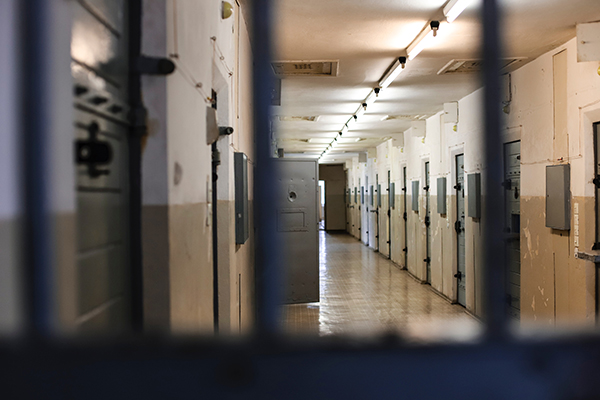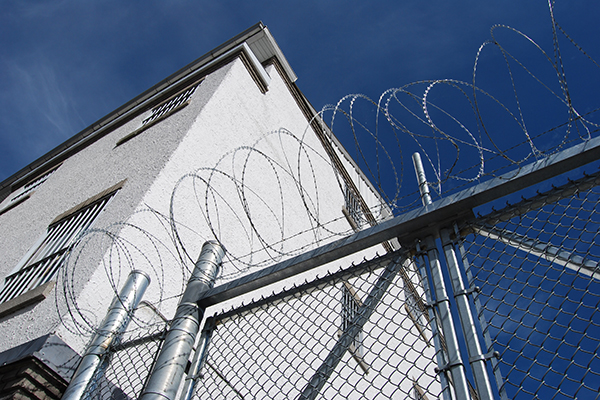Coronavirus in Canadian prisons
April 23, 2020
Share

The coronavirus pandemic has laid bare several unsettling truths about Canada’s prison system. Our institutions of state punishment are filled with medically vulnerable people, affected by lifelong difficulties accessing care along with unhealthy prison conditions.
 While life expectancy for most Canadians is 79 for males and 83 for females, two-thirds of the people who die of natural deaths while in federal custody are under the age of 65.
While life expectancy for most Canadians is 79 for males and 83 for females, two-thirds of the people who die of natural deaths while in federal custody are under the age of 65.
Another truth rarely acknowledged is that the collective interests of staff and inmates are often intertwined. Highly infectious disease makes no distinctions as it spreads through a congregate living facility.
The COVID-19 crisis has mobilized jurisdictions across the world to release entire categories of inmates to protect everyone living and working inside. As UCLA law professor Sharon Dolovich has put it, even jurisdictions in the United States with longstanding imprisonment addiction have seen “conscientious officials rediscovering decarceral powers they had forgotten they had.” Still, outbreaks at places like Rikers Island in New York and Chicago’s Cook County jail are devastating in scope.
Reduction in jail population
Ontario moved quickly to reduce its jail population: from March 16 to April 9, numbers fell from 8,344 to 6,025. About 70 per cent of Ontario inmates were awaiting trial, so large reductions could be achieved simply by processing bail applications. Prosecutors, defence lawyers and judges have largely co-operated in establishing procedures and making decisions in response to the pandemic.
On April 8, the Ontario Court of Appeal granted bail in an application brought by a defendant convicted of multiple charges in a sophisticated fraud scheme who was awaiting an appeal. The court cited public health authorities to make the point that social distancing “is not only a question of protecting a given individual but also the community at large.” An outbreak may turn into wider community spread as prison staff return home. The wider the spread, “the greater the pressure will be for scarce medical resources.” The court noted that the applicant was 64 years old with underlying health issues, and concluded that his detention was not necessary in the public interest.
It is always the case that the interests of incarcerated people are closely tied to those of us living free in the community. The pandemic has altered much about normal life, including the ability to deny those ties.
Still, the federal prison system in Canada has been slow to act. On March 31, Public Safety Minister Bill Blair said he directed the Parole Board and the Correctional Service to consider measures to facilitate early releases. By mid-April, little had happened — even though 170 federal inmates had tested positive, along with several staff.
The Queen’s Prison Law Clinic quickly pivoted its work to press for a more robust federal response. One of only two dedicated prison clinics in Canada, the small staff at this legal aid office in Kingston, delivers hands-on education to Queen’s University law students while providing front-line legal services to federal prisoners in eastern Ontario.

Families of inmates are worried
By late March, the clinic was receiving desperate calls from inmates and their families, all worried about the pre-existing conditions that suggested contracting this illness would be a death sentence. The case of Derrick Snow, a 53-year-old man with a long but non-violent criminal record, moved quickly to the top of the pile.
Snow’s record revolved around drug use, and he has cancer, diabetes and chronic obstructive pulmonary disease. He also had a fast-approaching statutory release date of July 2020 for his most recent theft-related offence. Snow’s sister was willing to help him self-isolate in her basement apartment.
Through early April, Paul Quick, a lawyer at the Queen’s Prison Law Clinic, engaged in near-daily correspondence with Bath Institution, working to identify viable legal avenues to facilitate a potentially life-saving adjustment to Snow’s July release date.
The few official responses focused on technical issues that failed to take into account the radically altered pandemic landscape. The warden declined to make a decision by the requested date of April 10.
Lawyers who work in legal aid settings don’t rush to court on a whim. Resources are scarce and the risk of losing — and setting a bad precedent with lasting impact on others — must be carefully weighed. These lawyers also rarely work alone. Prison lawyers across the country offered ideas and resources, and the clinic partnered with outside counsel Paul Champ, a leading human rights lawyer with a longstanding commitment to civil liberties.
Prisoner released on eve of hearing
An emergency hearing was scheduled for April 17. Champ sought a mandatory injunction ordering the warden to grant Snow an unescorted temporary absence on medical grounds. Though he had only days to act — and was working from home like the rest of us — Champ filed a record that exceeded 400 pages. It included detailed expert medical evidence, pandemic policy responses in other jurisdictions and extensive correspondence showing Quick’s attempts to convince the institution to act without a lawsuit.
The strongest cases often don’t get to hearing. Filing persuasive written materials often convinces the other side of the struggles they will face in front of a judge. Sure enough, the night before the hearing was scheduled to be held, the warden of Bath Institution granted Snow a medical release.
![[Paul Quick of Queen's Law Clinics works from home]](/gazette/sites/gazettewww/files/assets/WEB%20Paul%20Quick.jpg)
The warden’s decision acknowledges that, in normal circumstances, medical unescorted temporary absences are used to authorize moving a prisoner to a medical treatment facility. With prisoners who have serious medical conditions, unescorted temporary absences can now be granted when they have an “increased ability to self-isolate as per the public state of emergency related to the coronavirus pandemic.”
Maximizing impact
The Queen’s clinic is now working to capitalize on this precedent. Quick has shared materials with counsel across Canada. The clinic is reaching out to assist other vulnerable prisoners.
But this should not be a story of individual lawyers pushing individual cases. The federal government must establish an expert task force to identify prisoners for release. It should follow the World Health Organization and the United Nations Office of the High Commissioner for Human Rights, which issued a joint document on March 27 calling on public authorities to prioritize the release of prisoners with underlying health conditions, low-risk profiles or those with imminent release dates.
Inmates should also have a safe place to go where they will be able to self-isolate. For many, these conditions will be sadly difficult to meet — all the more reason for systematic and quick action in the cases where release makes sense, to ease the burden on all who must remain inside a prison during a pandemic.
Lisa Kerr, Assistant Professor, Queen's University, Faculty of Law, Queen's University.
This article is republished from The Conversation under a Creative Commons license. Read the original article.